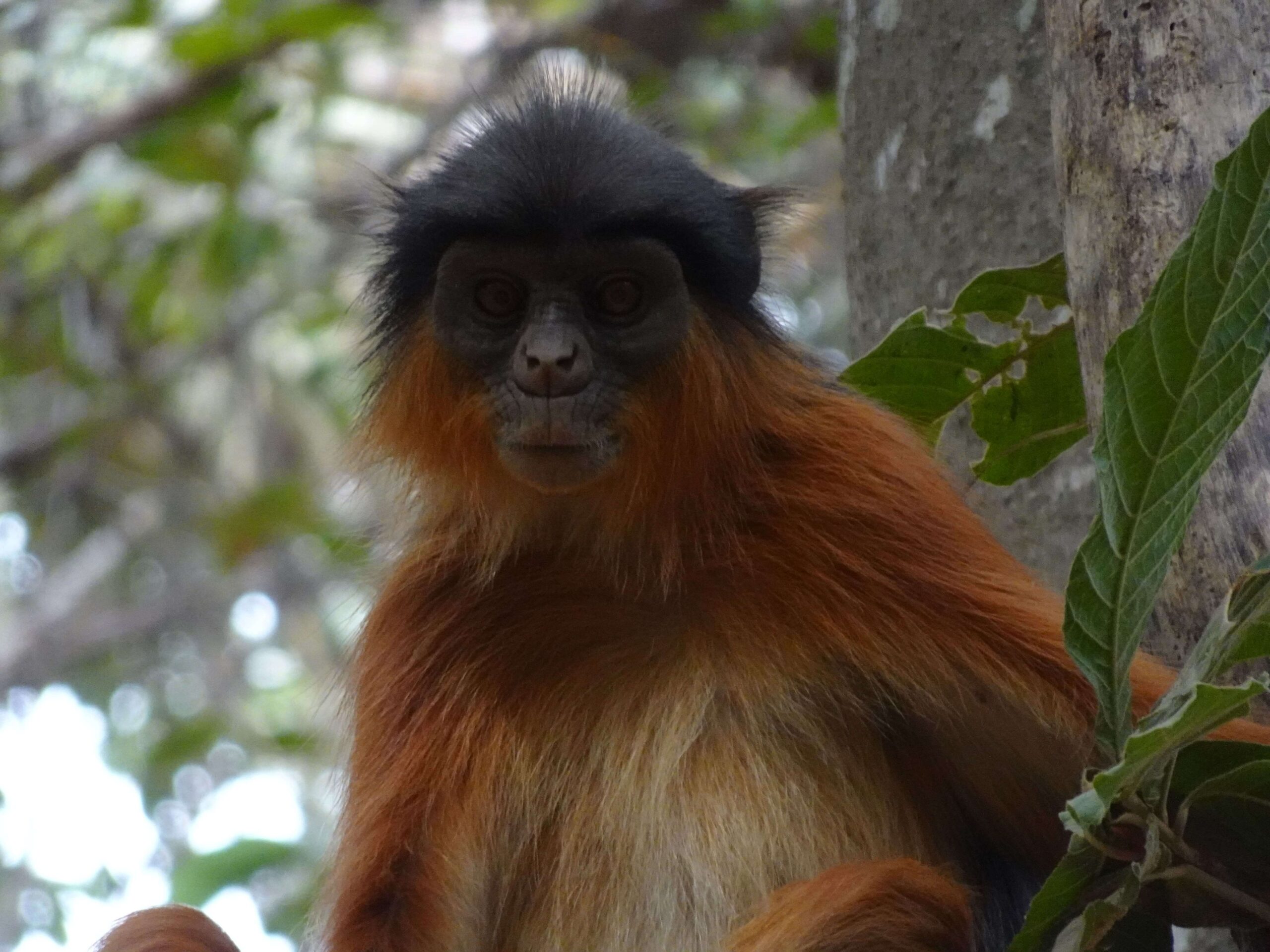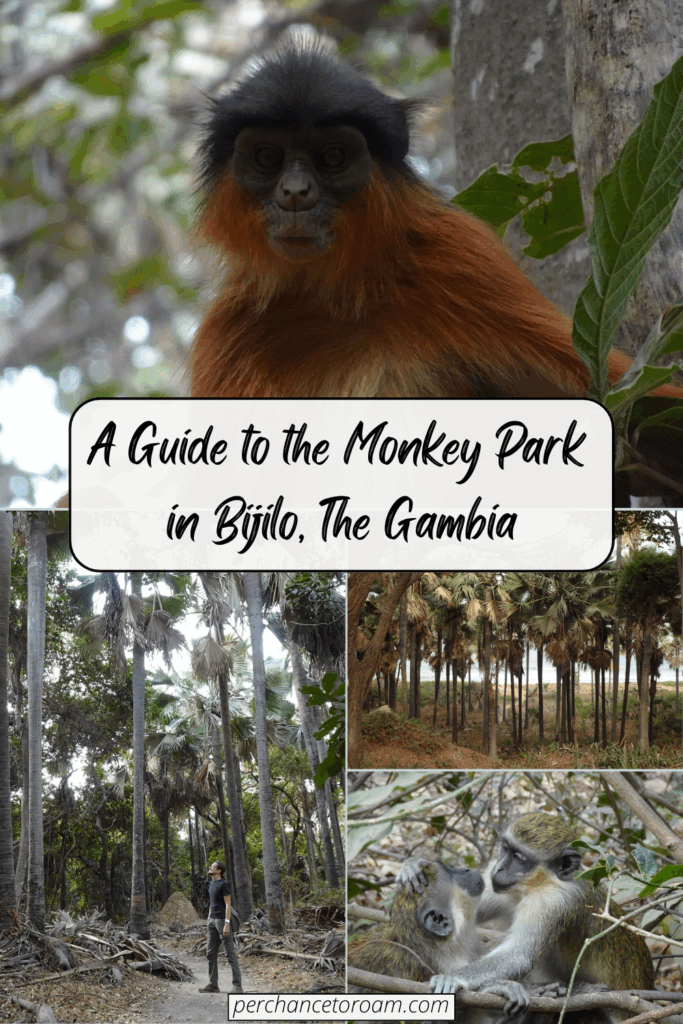Bijilo Forest Park (aka. Monkey Park) is a good destination if you need a break from beach loungers and bumsters while you’re hanging around The Gambia’s northern coast. The little patch of coastal forest sits conveniently on the edge of the main tourist zone – just a few minutes from the main strip in Kololi.
While it’s a pretty little slice of closed canopy forest populated by tons of colourful birds, I assume the main reason most people come here are the park’s three species of monkey. They are so used to people that they come much closer to visitors than they do in most other places in the country.
I checked the park out on my recent trip to The Gambia. Read on for everything you need to know about visiting Bijilo’s Monkey Park.
This post may contain affiliate links, and I might earn a small commission at no additional cost to you. For more info, click here.
What Is Bijilo Forest Park?
Bijilo Forest Park is a protected strip of dry tropical forest and coastal scrubland right next to the main tourism zone around Senegambia and Kololi. It’s about 50 hectares of shaded paths, towering palms, baobabs, and twisting tree roots.
Considering its location, it’s not exactly deep wilderness, but I thought it gave a good idea of what much of The Gambia’s coastline used to look like before all the resorts were built, and urban sprawl moved in.
The park was officially established in the 1950s to protect the area’s biodiversity, but over time unfortunately has been cut up for different construction projects, reducing its area significantly.
At the moment, it’s thankfully still hanging on – surely because it’s one of the country’s most popular tourist attractions, probably only second to Kachikally Crocodile Pool in Bakau.
What Species of Monkeys Can You See?
Let’s be honest: most people come for the monkeys, and you’ll definitely see some – likely before you even get through the gate. There are two main species here:
The curious and playful Green Monkeys, which are a closely related to the Vervet Monkeys that can be found all over East Africa
and
Temminck’s Red Colobus Monkeys, which are a little shyer and often hang out higher in the trees. They are much rarer than the Green Monkeys and actually an endangered species.
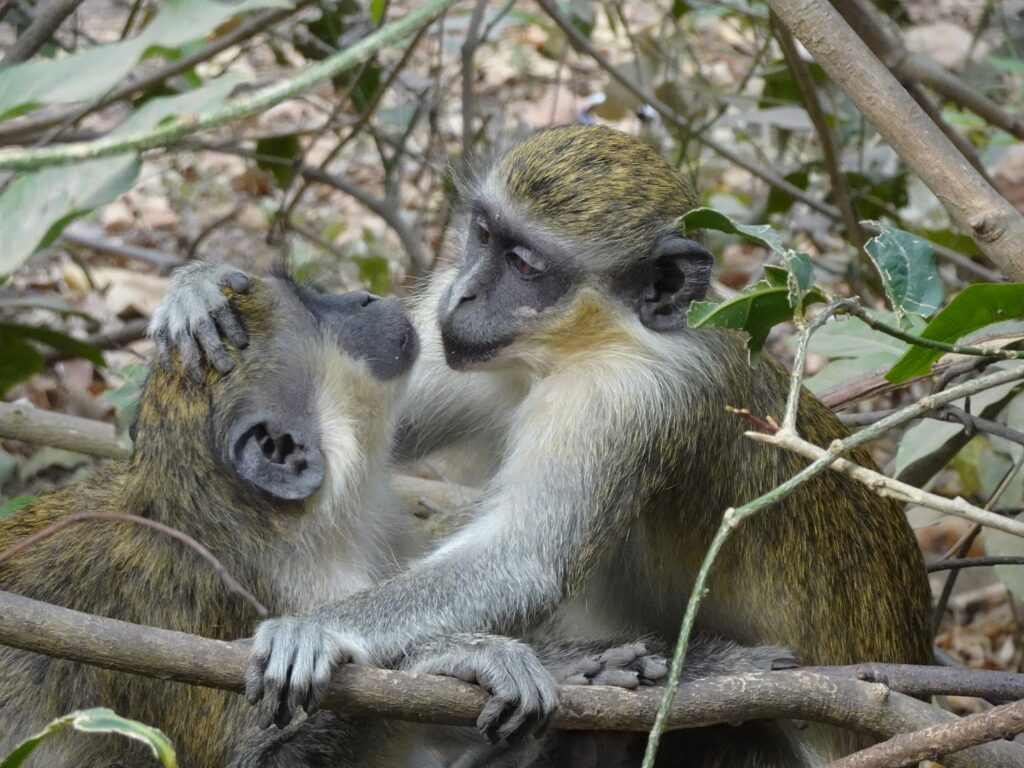
I spotted both of these within seconds of entering the park, and judging by the number I came across, I’d say you’re almost 100% guaranteed to see both species during a visit.
Apart from them, Patas Monkeys and Campbell’s Mona Monkey also live in the forest park, but are much harder to see. I also didn’t spot any during my visit.
What Else to See at Bijilo Forest Park
The park has quite a few other animals beside monkeys, and I spotted several lizards and a little Sun Squirrel while walking through the forest. I also met a few birdwatchers with guides and if that’s your thing, Bijilo is said to be a really good destination to tick some regional species off your list.
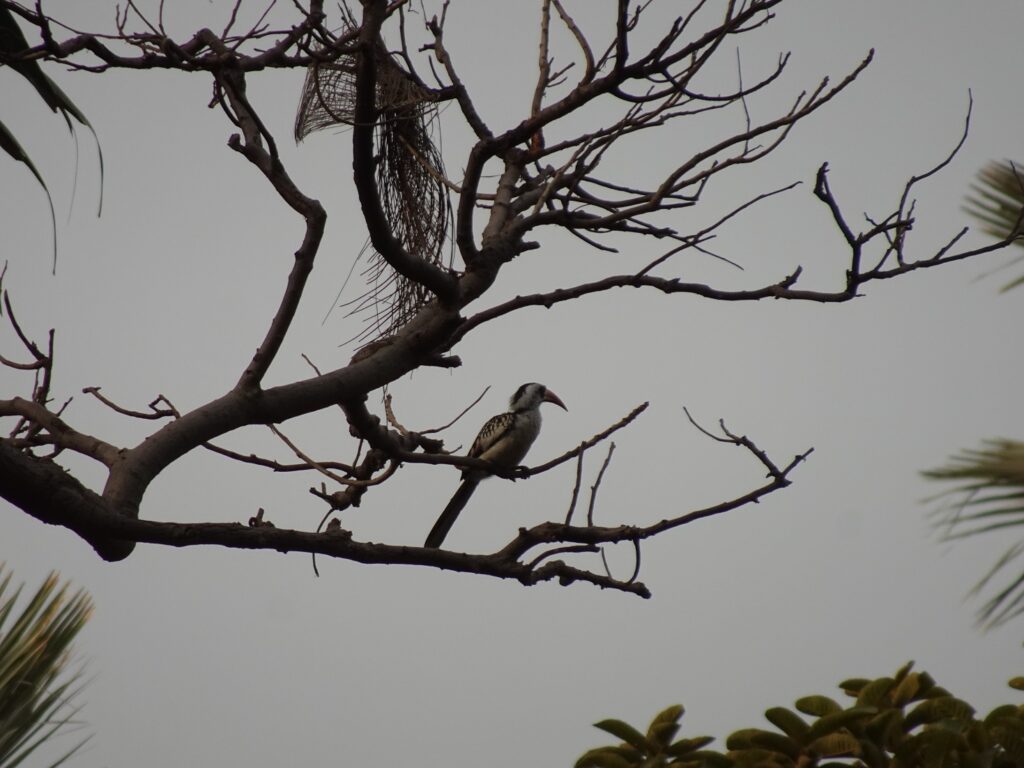
I saw lots of hornbills, rollers and pigeons without looking too closely, but if you take your time and keep your eyes peeled I’m sure you have good chances to spot something more exotic.
Apart from that, I just enjoyed strolling through a patch of close-canopied forest, which is not too common in Savannah-dominated Gambia. I also liked the location right my the Ocean and in the further parts of the park, there are several spots where you can watch the waves roll in behind pretty groves of palms trees.
Do You Need a Guide?
It depends on what you’re looking for. If you’re just there to see the monkeys, I’d say a guide isn’t necessary. I walked around on my own and saw tons of Red Colobus and Green Monkeys. Also, the trails are mostly well maintained and loop around in a circle, so it’s not hard to keep your bearings.
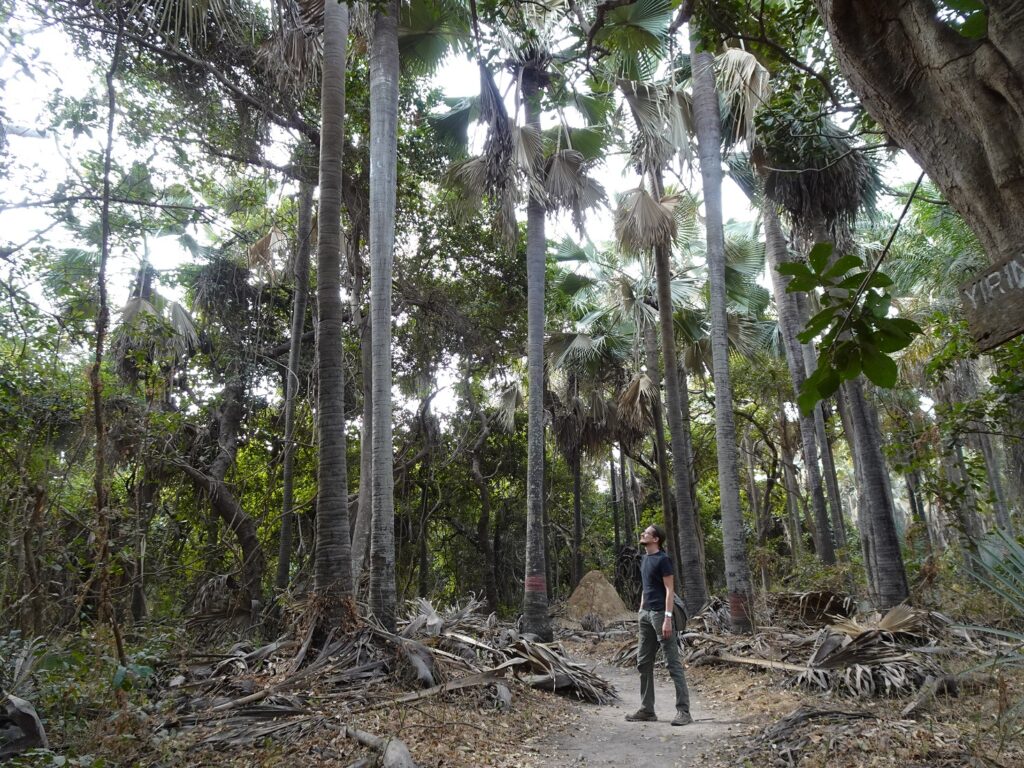
If you’re visiting the park to go birdwatching or want to see other rarer animals, a guide would be a good idea. That said, don’t let any bumsters you meet on the way to the park rope you into taking them along as a guide. I’m sure they’d be at least as expensive and far less knowledgeable as the guides in the park.
I came across a very persistent fellow who told me that you’re not allowed to visit the park without a guide. Of course that was BS, just as I expected, and I ended up exploring the park on my own, just as I wanted to.
How to Get There
This is one of the easiest “nature” excursions you can do in The Gambia. Bijilo Forest Park is basically right behind the Senegambia Strip, just a short walk from many of the main hotels and restaurants in Kololi.
If you’re staying in this popular area, you can just walk to the park. The entrance is right off the main road past the Senegambia junction, a little hidden behind the gigantic new Conference Centre.
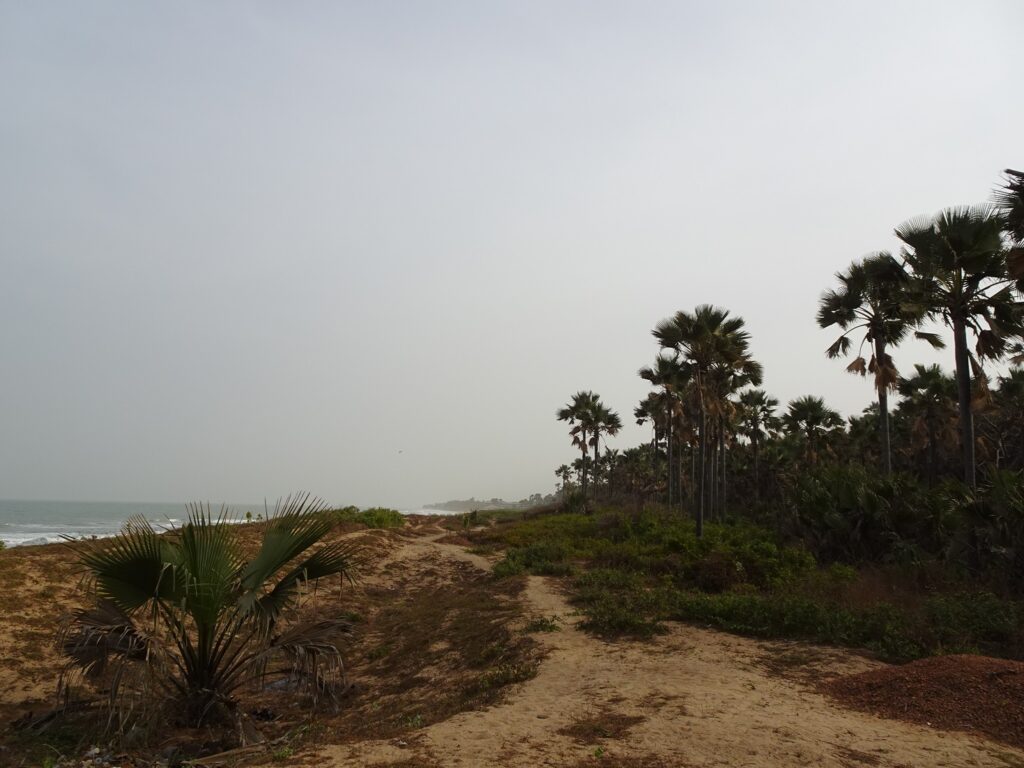
I stayed in Serrekunda when I was visiting the area, and if you’re too staying a little farther away, you can wave down any Gelly-Gelly or Bush Taxi driving down Bertil Harding Highway. Just tell them ‘Monkey Park’ and they’ll drop you at the turn-off from the highway. A ride from Kotu, Bakau or Serekunda shouldn’t be more than 20 Dalasi.
Finally, if you want a taxi of your own, you can take any yellow or green taxi and tell them that you want a ‘town trip’ to the park. They’ll drive you right to the gate, but especially the green taxis will be much more expensive than one of the shared options.
How Much is the Entrance Fee?
I paid 300 Dalasi on my visit in early 2025.
The Best Time to Visit
The forest is most alive in the morning, in the first hours after dawn. I was there at shortly after 8am, spotted plenty of wildlife and had the place almost to myself in the beginning. When I left two hours later, there were bigger groups of other visitors coming in.
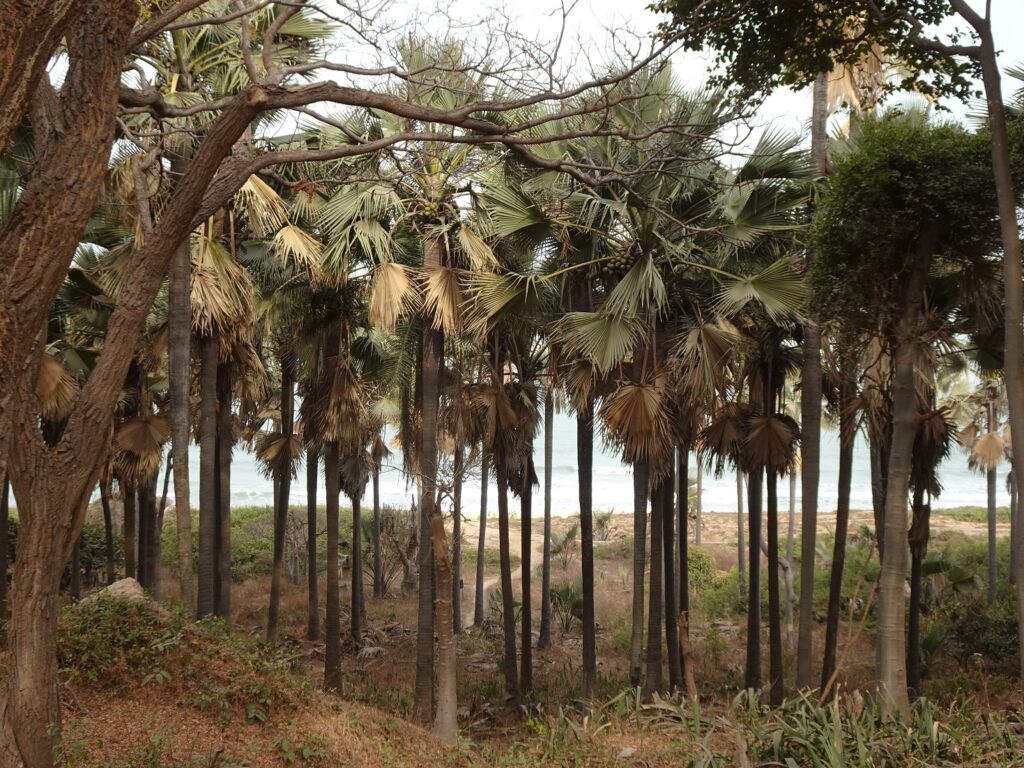
How Long Does the Visit Take?
The main trail loop is about 3km (2mi.). I walked it at a lazy pace in 90 minutes or so, with lots of stops for photos and to watch the monkeys. If you’re in a rush (though I wouldn’t recommend it), you can also do a shorter loop and be out in under an hour.
About Feeding the Monkeys (Please Don’t!)
Okay. Here comes the serious part.
At the entrance or even before, someone will almost definitely offer to sell you peanuts or bananas to “feed the monkeys.” A few bumsters tried it on my way there, and the guy selling me the ticket tried it, too.
Here’s the thing: Feeding wild animals (in a wildlife reserve, of all places!), causes real problems. Over time, they start to rely on people instead of foraging for their own food and become aggressive when they’re not fed, snatching bags, jumping on people, or even biting when they don’t get what they want.
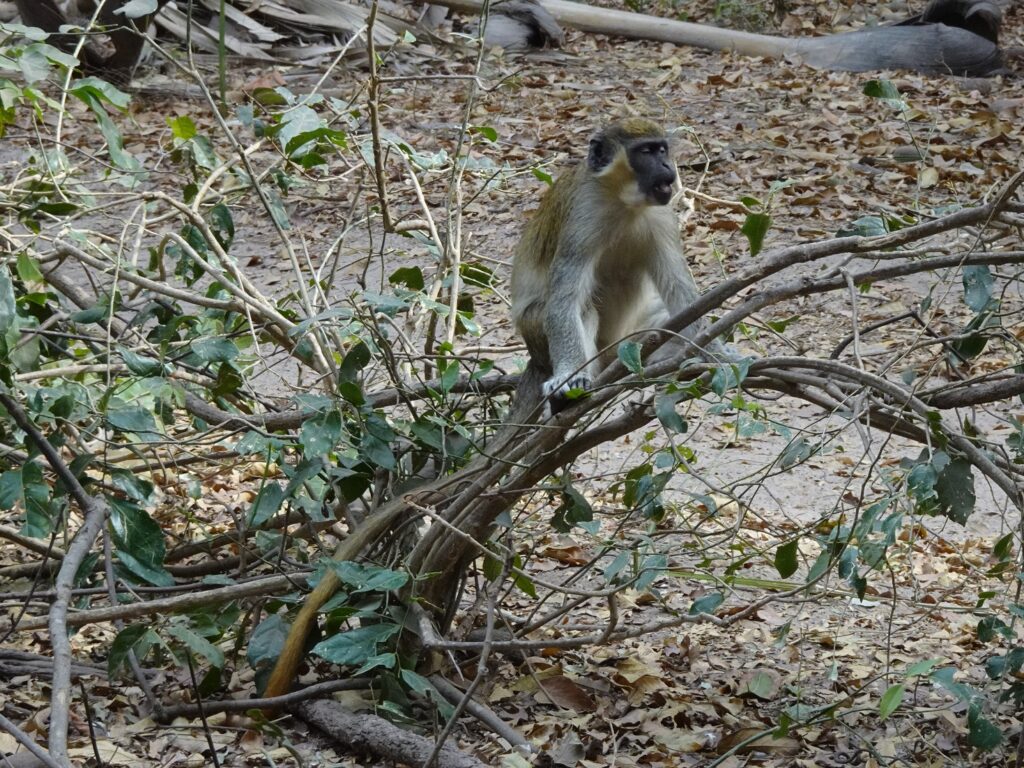
According to the Bradt Guide to The Gambia, there’s already a group of Green Monkeys from the park roaming up and down the coast, stealing food and destroying shops and homes. At some point, they’ll likely just be killed, because some people wanted a ‘cute’ picture feeding the monkeys.
Unfortunately, I saw lots of visitors inside the park who actually bought the stuff and were feeding the monkeys, while tourist guides were standing right there, not doing a thing. Please don’t be one of these people.
Bijilo Forest Park Map
As I noted above, the trails are not hard to make out and mostly well maintained. As a reference, this is the loop I walked within the park. It’s a walk of about 3km or 2 miles.
A Few Practical Tips
- Wear decent shoes: The trails are well maintained, but still no flip-flop material
- Bring enough water and some bug spray (especially in the wet season)
- Watch your bags around the monkeys, especially if you’re carrying food

Top 3 Hotels in Bijilo
Budget: B & B Villa Calliandra
Midrange: Ocean Breeze Luxury Apartments
Luxury: Coco Ocean Resort & Spa (pictured)
.
